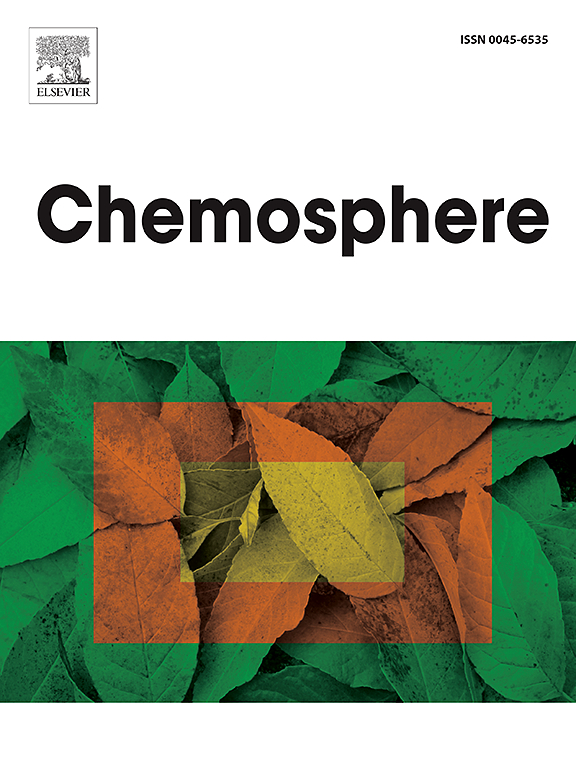Evaluating the fixed-bed column adsorption capacity of olive pomace biochar activated with KOH and H3PO4 for olive mill wastewater treatment: Insights from TOC and HPLC analysis
IF 8.1
2区 环境科学与生态学
Q1 ENVIRONMENTAL SCIENCES
引用次数: 0
Abstract
This study explores the treatment of olive mill wastewater (OMWW) using activated carbon derived from olive mill solid waste (OMSW). The OMSW was first converted into biochar on a pilot scale and then activated using potassium hydroxide (KOH) and phosphoric acid (H3PO4). Characterization revealed that AC/KOH had a higher BET surface area (829 m2 g−1) than AC/H3PO4 (749 m2 g−1). Fixed-bed column experiments showed breakthrough times of 250 min for AC/KOH and 220 min for AC/H3PO4. The adsorption capacities determined by the Thomas model were 275.9 mg g−1 for total phenolics (TP), 774.7 mg g−1 for total organic carbon (TOC) with AC/KOH, and 309.1 mg g−1 for TP, 823.5 mg g−1 for TOC with AC/H3PO4. The Adams-Bohart model showed kinetic constants (KAB) of 0.332 for TP and 3.66∗10−5 for TOC with AC/KOH, compared to 0.1926 for TP and 2.21∗10−5 for TOC with AC/H3PO4. The Yoon-Nelson model indicated τ50 % values of 171.57 min for TP 60.39 min for TOC with AC/KOH, 111.79 min for TP, and 41.75 min for TOC with AC/H3PO4. High-performance liquid chromatography (HPLC) analysis revealed hydroxytyrosol concentration decreased from 4.9 g.L−1 to 0.37 g.L−1 with AC/H3PO4 and 0.42 g.L−1 with AC/KOH. The total phenolic concentration reduced from 5.57 g.L−1 in untreated OMWW to 0.66 g.L−1 with AC/H3PO4 and 0.84 g.L−1 with AC/KOH. These results demonstrate that both activated carbons effectively reduce phenolic concentrations.
This study achieves some of the highest adsorption capacities reported for OMWW treatment, this technique demonstrates the outstanding performance of the developed materials. Unlike most research, which focuses on static conditions, less than 10 % of studies explore dynamic fixed-bed setups, underscoring the novelty of this work. The materials can be easily integrated into conventional treatment processes, providing a cost-effective and sustainable solution. By utilizing byproducts from the olive oil industry to treat its wastewater, the approach creates a closed-loop system. Furthermore, the activated carbons are regenerable and reusable, enhancing their practicality while enabling the recovery of valuable polyphenols for added resource valorization.

求助全文
约1分钟内获得全文
求助全文
来源期刊

Chemosphere
环境科学-环境科学
CiteScore
15.80
自引率
8.00%
发文量
4975
审稿时长
3.4 months
期刊介绍:
Chemosphere, being an international multidisciplinary journal, is dedicated to publishing original communications and review articles on chemicals in the environment. The scope covers a wide range of topics, including the identification, quantification, behavior, fate, toxicology, treatment, and remediation of chemicals in the bio-, hydro-, litho-, and atmosphere, ensuring the broad dissemination of research in this field.
 求助内容:
求助内容: 应助结果提醒方式:
应助结果提醒方式:


